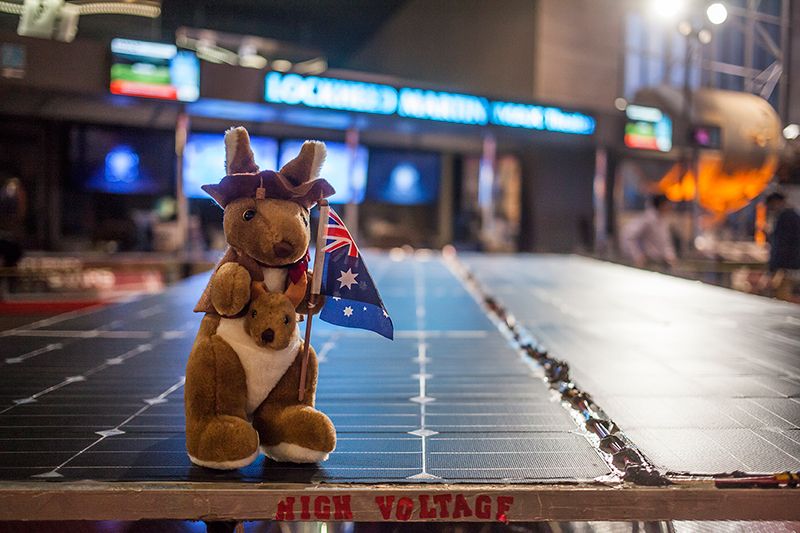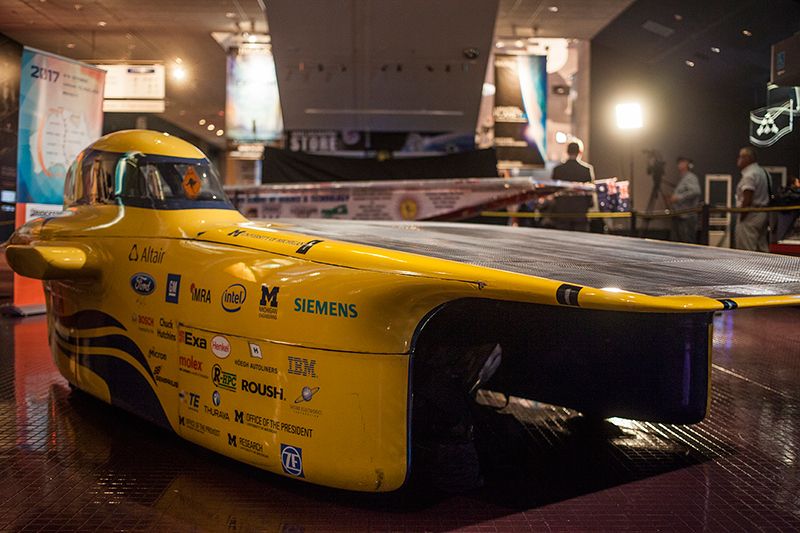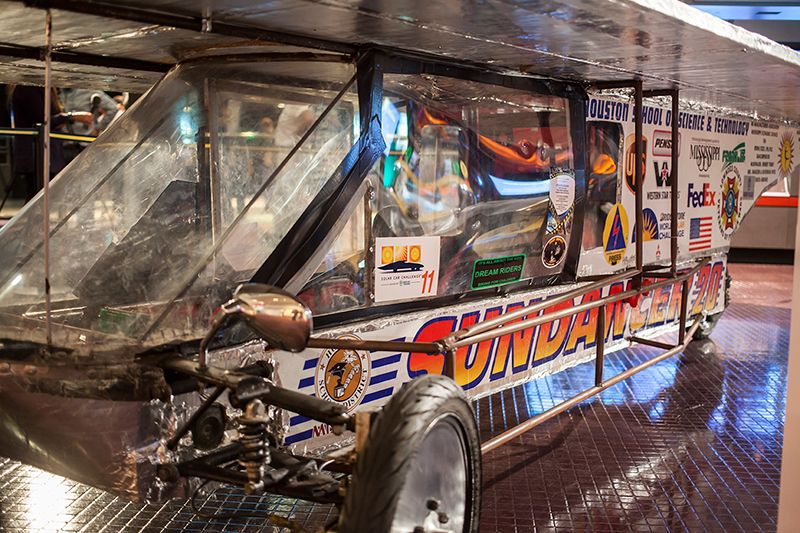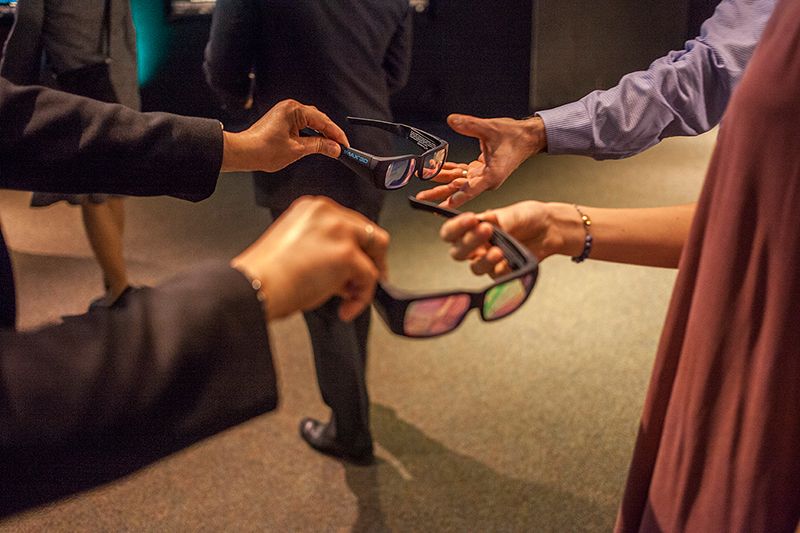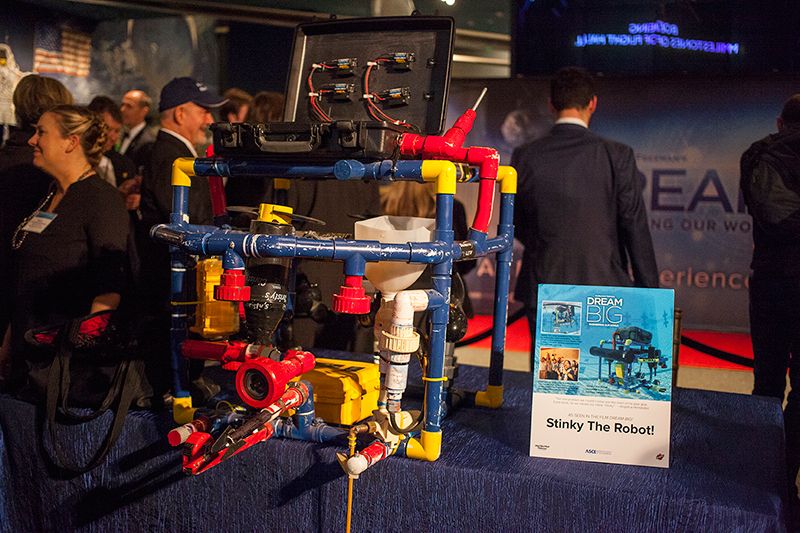The New IMAX Film “Dream Big” Roots for the Underdogs in the Engineering World
Director Greg MacGillivray’s latest documentary premieres at the National Air and Space Museum
In 2015, high school students from Houston, Mississippi, made their way across 1,736 miles of Australian outback in “Sundancer,” a 16-foot long solar car outfitted with 816 solar cells.
Looking at it next to more highly funded solar cars competing in the Bridgestone World Solar Challenge, one would think it wouldn’t have a chance. The team fielded the youngest competitors in the 30-year history of the race, from Darwin, in Australia’s Northern Territory, to Adelaide in the south. But “Sundancer” won its vehicle class while setting a record for most miles raced by a high school team in a single day when she traveled 252 miles.
“Sundancer” is just one of the many engineering feats to be featured in the film Dream Big: Engineering Our World. Filmmakers, engineers and students gathered last week at the National Air and Space Museum for the IMAX 3-D documentary’s world premiere.
“It’s absolutely incredible being in high school, and just being 16, 17, 18 year olds being featured on a big screen IMAX movie,” said Hunter Moore, captain of the “Sundancer” car team, at the screening. “I think its something that can be humbling or something that can make you big-headed. But being from our beginnings, I think that it’s humbled us [and made us realize] how blessed we really are and how much the solar car gives us opportunity to travel the world.”
Moore wasn’t alone in traveling from Houston; “Sundancer” came to the premiere too. The car was displayed outside the entrance to the Lockheed Martin IMAX theater, along with “Stinky” the underwater robot, a relic of the competitive robot circuit.
Dream Big emphasizes how much engineering is a part of everyday lives. From vastly populated Shanghai to Haiti, the film, narrated by Jeff Bridges, puts the viewer in the front seat of a stunning visual rollercoaster across the globe showcasing Scotland’s Falkirk Wheel, the world’s only rotating boatlift; China’s 127-story Shanghai Tower; and the Mojave Desert’s Ivanpah solar power plant, among other marvels.
“I wanted to shoot it around the world to give that sense of travel, because kids want to have an enjoyable life, they want to see the world, they want to challenge themselves with unique locations, and maybe with foreign language. Shooting in China, Dubai, France, all through America, Haiti and Australia was really a big challenge,” says director Greg MacGillivray, who has an impressive résumé with over 50 films to his credit, including “To Fly!,” which has played daily at the Air & Space Museum since its opening on July 1, 1976.
Another challenge for director MacGillivray was choosing which stories to tell. He wanted to show diversity, and that anyone from any background could dream to be an engineer. The retelling of the story of a robotics team at Carl Hayden Community High School in Phoenix, Arizona may exemplify this the best.
The robotics team overcame the odds in 2004, beating the likes of MIT and Harvard in the Marine Advanced Technology Education Center's Remotely Operated Vehicle Competition, sponsored in part by the Office of Naval Research and NASA.
Using DIY resourcefulness, the robotics team impressed the judges when it overcame last-minute obstacles. One such setback was a leak in their robot Stinky’s battery compartment, which could short out the control board and render the robot useless. Their solution—plugging the hole with tampons—worked.
Menzer Pehlivan, also featured in the film, lived through an earthquake in her home country of Turkey, and the experience inspired her to pursue a career specializing in earthquake engineering. The documentary shows her chasing her dream, working at a large engineering firm in Seattle that provides consulting, design, and construction services for corporations and governments.
“It has a special meaning to be part of this film, because it is a great opportunity to change the public image of engineering, which is mostly seen as boring and male-dominated. [It] actually is male-dominated, but being a female or coming from a different background does not mean you can’t be a great engineer,” said Menzer. “We are changing this public image of engineer to show that its not just about math and science. Its more about imagination, innovation and creation.”
Dream Big: Engineering Our World began playing nationally on February 17th, and it will be shown internationally starting March 25th.
